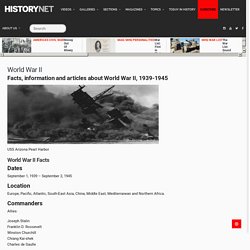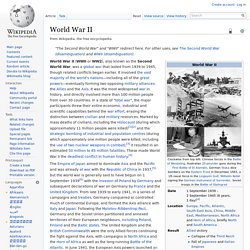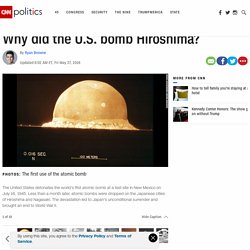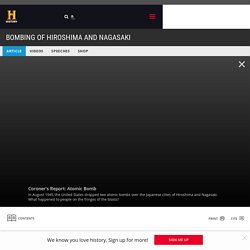

World War II. Facts, information and articles about World War II, 1939-1945 USS Arizona Pearl Harbor World War II Facts Dates September 1, 1939 – September 2, 1945 Location Europe, Pacific, Atlantic, South-East Asia, China, Middle East, Mediterranean and Northern Africa.

Commanders Allies: Joseph Stalin Franklin D. Axis: Adolf Hitler Hirohito Benito Mussolini Outcome Allied Victory Results End of German Third Reich United States and Russia become global superpowers Founding of the United Nations. World War II - Wikipedia. World War II (WWII or WW2), also known as the Second World War, was a global war that lasted from 1939 to 1945, though related conflicts began earlier.

It involved the vast majority of the world's nations—including all of the great powers—eventually forming two opposing military alliances: the Allies and the Axis. It was the most widespread war in history, and directly involved more than 100 million people from over 30 countries. In a state of "total war", the major participants threw their entire economic, industrial and scientific capabilities behind the war effort, erasing the distinction between civilian and military resources.
World War II - Battles, Facts, Videos & Pictures - History.com. Kokoda - Front Line. Kokoda Track WW2 Battle Scenario - Australian Briefing. Kokoda. Experiences of a Female Nurse during World War II. Changing Roles in Women - Australia. 100 Years of Australian Women and War. The Atomic Bomb. Why did the U.S. bomb Hiroshima? The city is the capital of Hiroshima Prefecture located in southwestern Japan on the island of Honshu.

The park is located atop the busy commercial district obliterated by the atomic blast and contains a museum and monuments dedicated to those killed by the explosion. The park is the location of the iconic "A-Bomb Dome," the skeletal ruins of the former Hiroshima Prefectural Industrial Promotion Hall. The A-Bomb Dome was designated a UNESCO World Heritage Site in 1996. It is described by UNESCO as not only representing "a stark and powerful symbol of the most destructive force ever created by humankind; it also expresses the hope for world peace and the ultimate elimination of all nuclear weapons.
" Population 1.17 million, according to a 2010 Japanese census. Population in 1945. Bombings of Hiroshima and Nagasaki - 1945. After the Interim Committee decided to drop the bomb, the Target Committee determined the locations to be hit, and President Truman issued the Potsdam Proclamation as Japan’s final warning, the world soon learned the meaning of “complete and utter destruction.”

The first two atomic bombs ever used were dropped on Japan in early August, 1945. For a detailed timeline of the bombings, please see Hiroshima and Nagasaki Bombing Timeline. Hiroshima On August 6, 1945, the United States dropped its first atomic bomb on the city of Hiroshima. The bomb was known as "Little Boy", a uranium gun-type bomb that exploded with about thirteen kilotons of force.
The bombing of Hiroshima, codenamed Operation Centerboard, was approved by Curtis LeMay on August 4, 1945. Pilot Paul Tibbets: "We turned back to look at Hiroshima. Bombing of Hiroshima and Nagasaki - World War II. Hiroshima, a manufacturing center of some 350,000 people located about 500 miles from Tokyo, was selected as the first target.

After arriving at the U.S. base on the Pacific island of Tinian, the more than 9,000-pound uranium-235 bomb was loaded aboard a modified B-29 bomber christened Enola Gay (after the mother of its pilot, Colonel Paul Tibbets). The plane dropped the bomb–known as “Little Boy”–by parachute at 8:15 in the morning, and it exploded 2,000 feet above Hiroshima in a blast equal to 12-15,000 tons of TNT, destroying five square miles of the city.
Hiroshima’s devastation failed to elicit immediate Japanese surrender, however, and on August 9 Major Charles Sweeney flew another B-29 bomber, Bockscar, from Tinian. Thick clouds over the primary target, the city of Kokura, drove Sweeney to a secondary target, Nagasaki, where the plutonium bomb “Fat Man” was dropped at 11:02 that morning. Access hundreds of hours of historical video, commercial free, with HISTORY Vault.